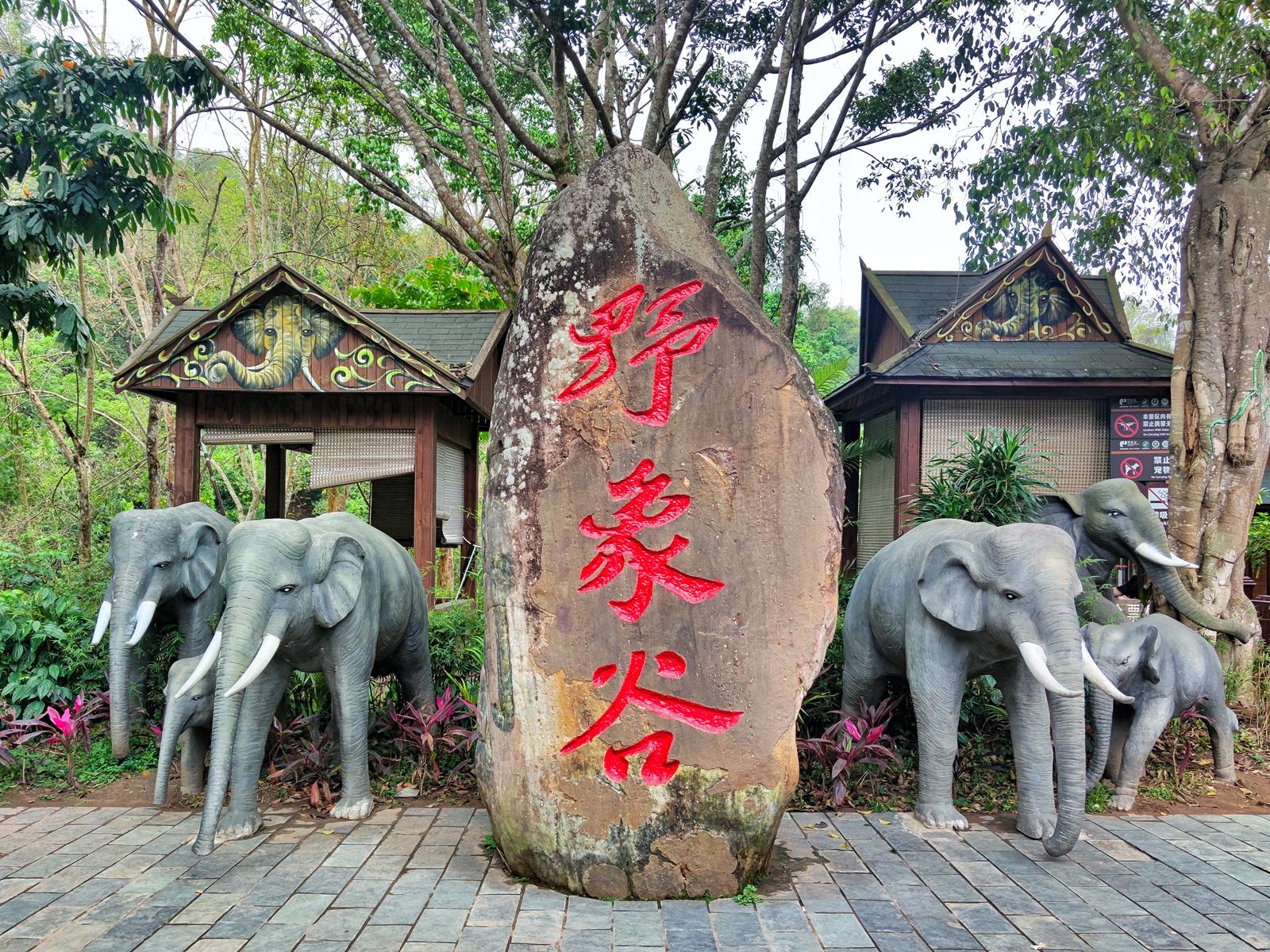





Wild Elephant Valley is an exclusive destination in China where visitors can closely observe Asian elephants safely and securely. Explore the tropical rainforest, track the elephants, and immerse yourself in the natural habitat of these magnificent creatures while enjoying up-close interactions.
Located 40 kilometres (24 miles) north of Jinghong, the major city of Xishuangbanna Dai Autonomous Prefecture, Wild Elephant Valley is renowned for its pristine tropical rainforest and the presence of a significant population of wild Asian elephants.
Around 130 wild elephants frequently roam the Wild Elephant Valley, making it the primary location in China to witness these majestic creatures in their natural environment.
Situated at an altitude ranging between 747 to 1055 metres, the valley features gentle rolling hills and a network of rivers and streams. It is also home to various endangered species, including the Asian wild elephants, bison, green peacocks, and macaques, creating a true paradise for wildlife enthusiasts.
Additionally, the Elephant Valley plays a prominent role as one of the key venues for the annual Water Splashing Festival in Xishuangbanna. This vibrant event, celebrated from 13 to 15 April each year, offers a unique cultural experience.
Apart from the captivating rainforest and wild elephants, the park offers several scenic zones. These include Tree houses, Butterfly Park, Snake Park, Orchid Garden, and the Bainiao Garden, where a multitude of rare birds hang out.
The optimal time to visit Wild Elephant Valley is during the dry season, which runs from October to April. Between November and February, wild elephants are more likely to gather at the base of the valley due to the scarcity of water elsewhere. The best chances of sighting wild elephants are during dawn and dusk.
There are two entrances to the Wild Elephant Valley: the south gate, which offers a wider array of attractions, and the north gate, in proximity to the Asian Elephant Museum. At the south gate, visitors can enjoy the Elephant School with its elephant performances, the Rainforest Theatre showcasing local folk dances, the Lizards Garden featuring nationally protected animals, as well as the Butterfly Garden and Lotus Garden, among others.
To make the most of your time, we recommend entering through the south gate in the early morning. Take the cable car to the Elephant Observation Platform and then proceed to walk down the Elevated Observation Walkway. You can choose to conclude your tour at the north gate or return to the south gate if there are additional attractions that interest you.
For a unique rainforest sightseeing experience, the cable car is a great option. The semi-enclosed transport covers a route of 2,063 metres and takes approximately 35 minutes for a one-way journey.
From the cable car, you can enjoy breathtaking bird's-eye views of the expansive tropical rainforest and observe wild animals in their natural habitats.
Keep an eye out for the majestic wild elephants as they roam and forage amidst the forest scenery.
There also have a Elevated Observation Walkway in the Wild Elephant Valley.
The elevated observation walkway is strategically positioned near the ponds where the wild elephants often engage in playful activities and forage, making it the ideal vantage point for observing these magnificent creatures.
The walkway spans a length of 2,280 metres and is divided into two sections. The first section measures 920 metres, stretching from the Bird Park to the Asian Elephant Museum, while the second section covers 1,360 metres, extending from the Asian Elephant Museum to the Elephant Observation Platform.
Xishuangbanna Mengyang National Nature Reserve, Mengyang Town, Jinghong City, Xishuangbanna Dai Autonomous Prefecture.
1. The best time to visit Xishuangbanna is from October to April.
2. It is advisable to carry mosquito repellent and sunscreen to protect yourself.
Maintain a safe distance from the wild elephants and respect the local customs of the Dai and other ethnic minorities.
3. Xishuangbanna experiences a tropical rainforest climate, characterized by a dry season from November to April of the following year and a rainy season from May to October. With an average annual temperature of 21°C, the region enjoys long summers and mild winters, offering pleasant weather throughout the four seasons.












